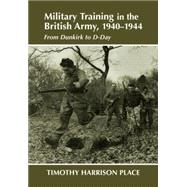- ISBN: 9780714680910 | 0714680915
- Cover: Nonspecific Binding
- Copyright: 10/11/2000
Between 1940 and 1944, although large numbers of British troops battled around the littorals of the Mediterranean and Burma, most of the British Army bided its time at home. Between Dunkirk and D-Day, those troops lived in a grey area, neither fully at peace nor properly at war. While they trained under virtually peacetime conditions, their colleagues overseas were gaining up-to-date battle experience. The lessons from that experience should have made the troops who crossed the Channel in summer 1944 the most thoroughly prepared soldiers ever to go into their first battle. Sadly, the results in Normandy confounded any such expectations, as in battle after battle the combat effectiveness of British troops, particularly infantry and armour, proved weak. In this study, Timothy Harrison Place traces the reasons for the British Army's tactical weakness in Normany to flaws in its training in Britain. The armour suffered from a failure fully to disseminate the lessons of experience in the Mediterranean theatresto troops training at home. Disagreements between General Montgomery and the War Office over basic doctrine for the employment of armour exacerbated matters. The infantry, meanwhile, failed to apply the lessons learned on the Western Front a generation before. They trained according to the habits of 1916, and, despite the efforts of some among their number, the British Army never fully recovered from that error. This book paints a picture of an untried British Army working hard to learn its trade. Oblivious to the fact that it was always one step behind the enemy, this was an army cruelly let down by poor direction from the top.







